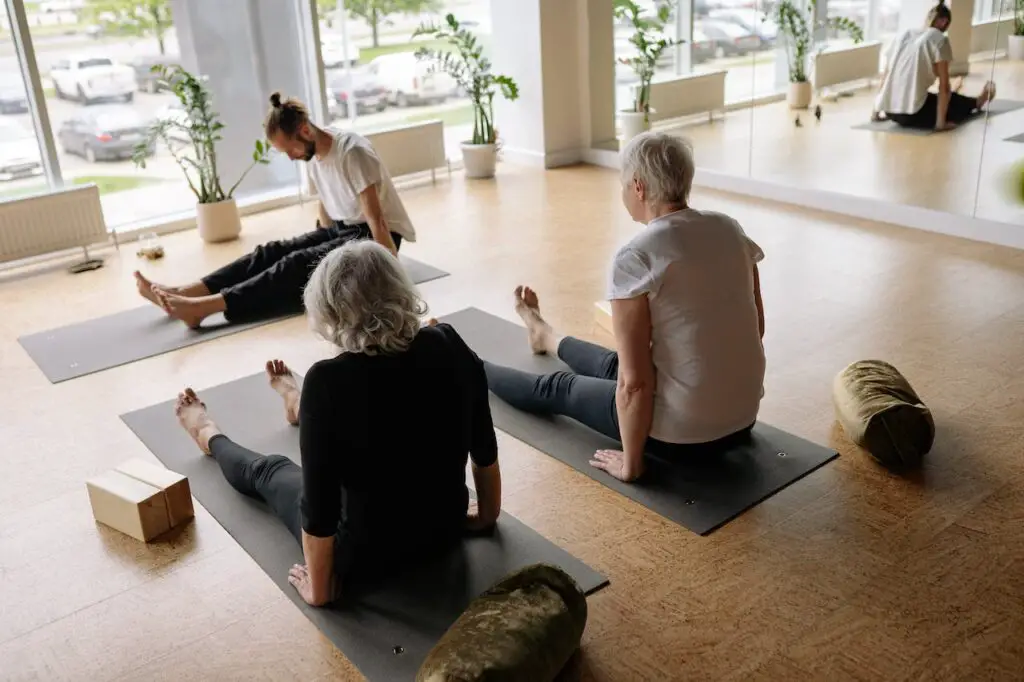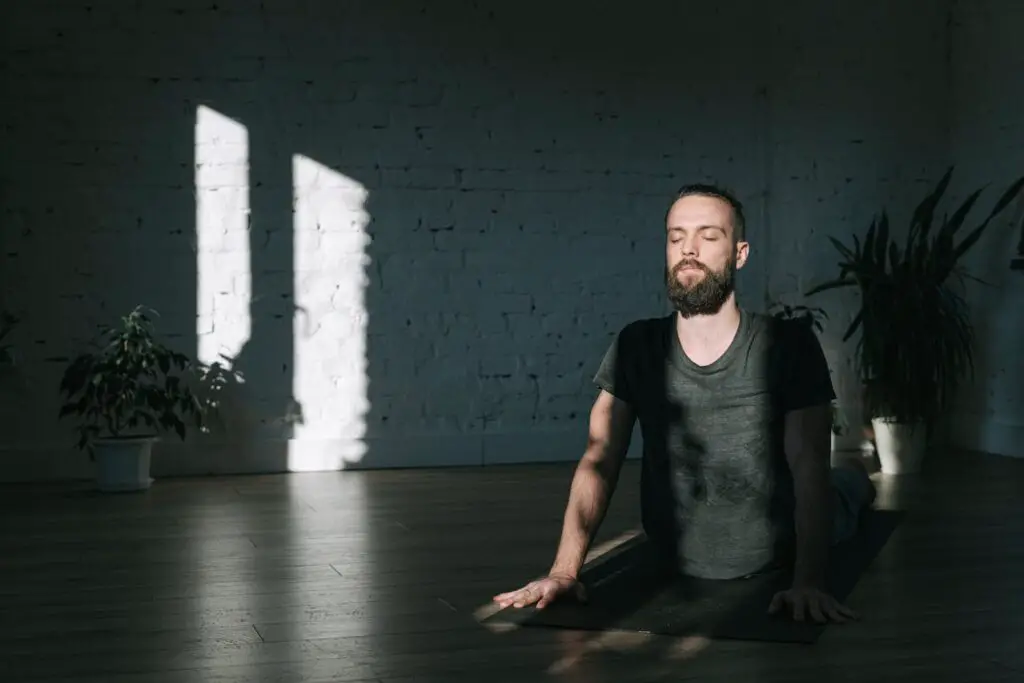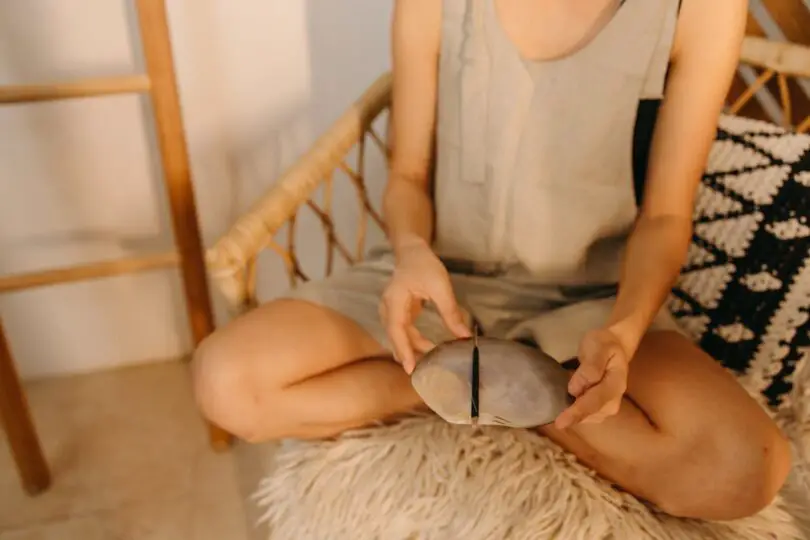In today’s fast-paced world, finding time for exercise and relaxation can be challenging. However, with chair yoga, you can improve your physical and mental well-being without even leaving your seat. Chair yoga offers a gentle yet effective way to stretch, strengthen, and relax your body, making it accessible to people of all ages and fitness levels.
Table of Contents
Introduction to Chair Yoga
What is chair yoga?
Chair yoga is a modified form of yoga that is practiced while sitting on a chair or using the chair for support. It incorporates gentle stretches, breathing exercises, and mindfulness techniques to promote flexibility, strength, and relaxation.
Benefits of chair yoga
- Improves flexibility and mobility.
- Strengthens muscles and joints.
- Reduces stress and anxiety.
- Improves posture and balance.
- Increases energy and vitality.
Getting Started with Chair Yoga
Before diving into chair yoga exercises, it’s essential to prepare yourself and create a safe environment for practice.
Necessary equipment
All you need for chair yoga is a sturdy chair with a flat seat and backrest. Avoid chairs with wheels or armrests that restrict movement.
Finding a suitable chair
Choose a chair that allows you to sit comfortably with your feet flat on the floor and your knees bent at a 90-degree angle. Make sure the chair is stable and provides adequate support.
Precautions and safety tips
Listen to your body and avoid pushing yourself into uncomfortable positions. If you have any pre-existing medical conditions or injuries, consult with your healthcare provider before starting a chair yoga practice.
Basic Chair Yoga Poses
Neck stretches
- Sit tall in your chair and gently tilt your head to one side, bringing your ear towards your shoulder.
- Hold for a few breaths, then switch sides.
- Repeat as needed to release tension in the neck and shoulders.
Shoulder rolls
- Roll your shoulders forward in a circular motion, then reverse the direction.
- Focus on relaxing the muscles and increasing mobility in the shoulders.
Seated forward bend
- Sit towards the front edge of your chair with your feet flat on the floor.
- Inhale to lengthen your spine, then exhale to hinge forward from the hips, reaching towards your feet or the floor.
- Hold for a few breaths, then slowly return to an upright position.
Seated spinal twist
- Sit tall in your chair and place your right hand on the back of the chair.
- Inhale to lengthen your spine, then exhale to twist towards the right, placing your left hand on your right knee.
- Hold for a few breaths, then repeat on the opposite side.
Intermediate Chair Yoga Poses

Seated cat-cow stretch
- Sit towards the front edge of your chair with your hands resting on your knees.
- Inhale to arch your back and lift your chest towards the ceiling (cow pose).
- Exhale to round your spine and tuck your chin towards your chest (cat pose).
- Continue flowing between cat and cow pose with your breath for several rounds.
Chair pigeon pose
- Sit towards the front edge of your chair and cross your right ankle over your left knee.
- Flex your right foot and gently press your right knee towards the floor.
- Hold for a few breaths, then repeat on the opposite side.
Seated side stretch
- Sit tall in your chair and reach your right arm overhead, stretching towards the left.
- Keep both hips grounded on the chair and avoid collapsing into the side body.
- Hold for a few breaths, then switch sides.
Seated eagle arms
- Sit tall in your chair and extend your arms out to the sides.
- Cross your right arm over your left, bringing your elbows together.
- Press your palms together and lift your elbows towards the ceiling.
- Hold for a few breaths, then switch sides.
Advanced Chair Yoga Poses
Chair warrior series
- Sit towards the front edge of your chair with your feet hip-width apart.
- Extend your right leg back and bend your left knee, coming into a lunge position.
- Reach your arms overhead and hold for a few breaths, then switch sides.
Seated tree pose
- Sit tall in your chair and place your right foot on your left thigh, just above the knee.
- Press your right foot into your thigh and engage your core for stability.
- Hold for a few breaths, then repeat on the opposite side.
Seated dancer’s pose
- Sit towards the front edge of your chair and extend your right leg forward.
- Reach your right arm back and hold onto the outside of your right foot or ankle.
- Lean forward slightly and kick your right foot into your hand, opening up the chest and shoulders.
- Hold for a few breaths, then switch sides.
Breathing Techniques in Chair Yoga
Importance of breath in yoga
- Deep breathing helps to calm the mind and reduce stress.
- It oxygenates the body and improves circulation.
- Breath awareness enhances concentration and focus during yoga practice.
Simple breathing exercises
- Practice deep belly breathing by inhaling deeply through your nose, filling your belly with air, and exhaling slowly through your mouth.
- Try alternate nostril breathing to balance the left and right sides of the brain, promoting relaxation and mental clarity.
Chair Yoga for Stress Relief

Relaxation techniques
- Practice progressive muscle relaxation by tensing and releasing each muscle group in the body, starting from the feet and working your way up to the head.
- Use guided imagery to visualize a peaceful scene or place that brings you comfort and relaxation.
Mindfulness practices
- Bring awareness to the present moment by focusing on your breath or the sensations in your body.
- Notice any thoughts or emotions that arise without judgment, allowing them to come and go like clouds passing through the sky.
Chair Yoga for Seniors and Limited Mobility
Adaptations for different needs
- Use props such as blankets or blocks to support the body in poses and make them more accessible.
- Modify poses by reducing the range of motion or using gentle movements to avoid strain.
Gentle movements for seniors
- Incorporate gentle stretches and movements that improve circulation and flexibility without causing discomfort.
- Focus on functional movements that mimic activities of daily living, such as reaching, twisting, and bending.
Incorporating Chair Yoga into Daily Routine
Tips for consistency
- Set aside a specific time each day for chair yoga practice, whether it’s in the morning, during a break at work, or before bed.
- Start with just a few minutes each day and gradually increase the duration as you build strength and confidence.
Integrating short sessions throughout the day
- Take mini yoga breaks throughout the day to stretch and relax your body, even if it’s just for a few minutes at a time.
- Use simple chair yoga poses and breathing exercises to relieve tension and recharge your energy.
Chair Yoga for Office Workers
Combatting sedentary lifestyle
- Counteract the effects of prolonged sitting by incorporating chair yoga into your daily routine at work.
- Stretch and move your body regularly to prevent stiffness and improve circulation.
Relieving office-related stress and tension
- Use chair yoga poses and breathing exercises to release tension in the neck, shoulders, and back caused by long hours of sitting and computer work.
- Take short breaks throughout the day to refresh your mind and body, improving focus and productivity.
Chair Yoga for Rehabilitation
Supporting recovery from injuries
- Work with a qualified yoga instructor or physical therapist to develop a customized chair yoga practice that addresses your specific needs and limitations.
- Focus on gentle movements and breath awareness to promote healing and prevent further injury.
Working with physical therapists
- Coordinate with your healthcare team to integrate chair yoga into your rehabilitation program, complementing other forms of therapy such as physical and occupational therapy.
- Communicate openly with your therapist about any concerns or limitations you may have, ensuring a safe and effective practice.
Chair Yoga for Mental Health
Improving mood and emotional well-being
- Practice chair yoga regularly to reduce symptoms of anxiety, depression, and other mental health conditions.
- Focus on mindful movement and breath awareness to calm the mind and cultivate a sense of inner peace and tranquility.
Enhancing focus and concentration
- Use chair yoga as a tool to improve concentration and cognitive function, enhancing your ability to stay focused and alert throughout the day.
- Incorporate mindfulness practices such as meditation and visualization to quiet the mind and sharpen your mental clarity.
Chair Yoga for Chronic Pain Management
Easing discomfort through gentle movements
- Explore gentle stretches and movements that target areas of chronic pain and tension in the body, such as the neck, shoulders, and lower back.
- Listen to your body and modify poses as needed to avoid exacerbating pain or causing injury.
Providing relief for chronic conditions
- Use chair yoga as part of a comprehensive pain management strategy to reduce reliance on medication and other interventions.
- Consult with your healthcare provider to develop a personalized plan that addresses your unique needs and goals.
Resources for Chair Yoga Practitioners
Online tutorials and classes
- Explore a variety of chair yoga resources available online, including instructional videos, virtual classes, and downloadable guides.
- Choose reputable sources that are led by experienced instructors and tailored to your skill level and preferences.
Books and guides
- Invest in a good chair yoga book or guide that provides detailed instructions and illustrations for practicing at home.
- Look for titles written by certified yoga teachers or healthcare professionals with expertise in adaptive yoga.
Relaed Article: Free Printable Chair Yoga for Seniors
Conclusion
Chair yoga offers a convenient and accessible way to improve your physical and mental well-being from the comfort of your seat. Whether you’re looking to increase flexibility, reduce stress, or manage chronic pain, chair yoga can be adapted to meet your needs and goals. Start incorporating chair yoga into your daily routine today and experience the transformative benefits for yourself.







